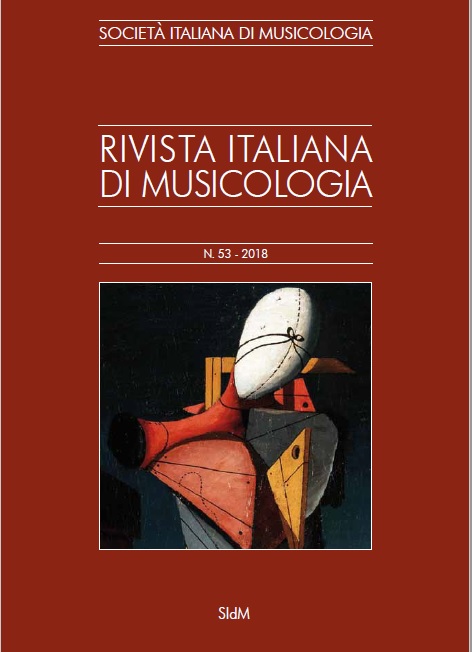Il teatro per tastiera di Liszt. Ars construendi e drammaturgia nel Miserere du Trovatore
Abstract
The present essay investigates one of the least examined examples of Liszt’s substantial production of transcriptions, the Miserere du Trovatore R266. In doing so, it suggests three different levels of interpretation. First, Liszt’s piano scoring is analysed in relation to Verdi’s original instrumentation. In order to recreate Verdi’s gloomy atmosphere (depicted in the theatre through the combination of sound, singing, lighting and staging effects) on the piano, Liszt achieved an expressive intensification that encompassed all aspects of the musical discourse (pitch, loudness, timbre, duration, rhythm, harmony, phrasal and dramaturgical structure), thus emphasizing the contrast between love dream and death premonition, Eros and Thanatos. Second, the ars construendi hidden behind the mere text is deeply analyzed. The construction, perfectly planned down to the tiniest detail, leaves nothing to chance, from the number of measures and the symmetry of the form to the systematic use of the golden ratio. Liszt’s will to completely reshape Verdi’s piece by basing it on a new and different aesthetic canon thus becomes evident. Finally, we can grasp Liszt’s ability to present a notable critical synthesis, visible through the whole system of allusions and references, both explicit and veiled, deeply embedded in the musical text. In particular, the opening chromatic descending semitone, which represents the generating cell of the whole composition and secures its structural and dramaturgical unity, builds a veritable ideal ‘bridge’ with Verdi’s drama, evoking, like ghosts, the opera’s main characters (Azucena, Manrico, Leonora).Published
03/19/2018
Issue
Section
Saggi


